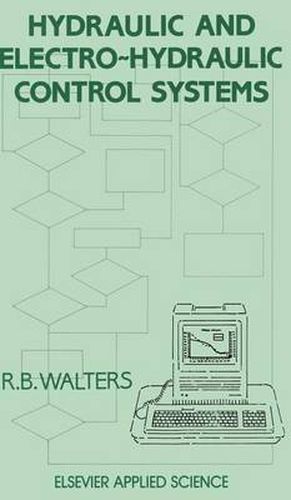Readings Newsletter
Become a Readings Member to make your shopping experience even easier.
Sign in or sign up for free!
You’re not far away from qualifying for FREE standard shipping within Australia
You’ve qualified for FREE standard shipping within Australia
The cart is loading…






This title is printed to order. This book may have been self-published. If so, we cannot guarantee the quality of the content. In the main most books will have gone through the editing process however some may not. We therefore suggest that you be aware of this before ordering this book. If in doubt check either the author or publisher’s details as we are unable to accept any returns unless they are faulty. Please contact us if you have any questions.
Force and motion control systems of varying degrees of sophistication have shaped the lives of all individuals living in industrialized countries all over the world, and together with communication technology are largely responsible for the high standard ofliving prevalent in many communities. The brains of the vast majority of current control systems are electronic, in the shape of computers, microprocessors or programmable logic controllers (PLC), the nerves are provided by sensors, mainly electromech anical transducers, and the muscle comprises the drive system, in most cases either electric, pneumatic or hydraulic. The factors governing the choice of the most suitable drive are the nature of the application, the performance specification, size, weight, environ mental and safety constraints, with higher power levels favouring hydraulic drives. Past experience, especially in the machine tool sector, has clearly shown that, in the face of competition from electric drives, it is difficult to make a convincing case for hydraulic drives at the bottom end of the power at fractional horsepower level. A further, and frequently range, specifically overriding factor in the choice of drive is the familiarity of the system designer with a particular discipline, which can inhibit the selection of the optimum and most cost-effective solution for a given application. One of the objectives of this book is to help the electrical engineer overcome his natural reluctance to apply any other than electric drives.
$9.00 standard shipping within Australia
FREE standard shipping within Australia for orders over $100.00
Express & International shipping calculated at checkout
This title is printed to order. This book may have been self-published. If so, we cannot guarantee the quality of the content. In the main most books will have gone through the editing process however some may not. We therefore suggest that you be aware of this before ordering this book. If in doubt check either the author or publisher’s details as we are unable to accept any returns unless they are faulty. Please contact us if you have any questions.
Force and motion control systems of varying degrees of sophistication have shaped the lives of all individuals living in industrialized countries all over the world, and together with communication technology are largely responsible for the high standard ofliving prevalent in many communities. The brains of the vast majority of current control systems are electronic, in the shape of computers, microprocessors or programmable logic controllers (PLC), the nerves are provided by sensors, mainly electromech anical transducers, and the muscle comprises the drive system, in most cases either electric, pneumatic or hydraulic. The factors governing the choice of the most suitable drive are the nature of the application, the performance specification, size, weight, environ mental and safety constraints, with higher power levels favouring hydraulic drives. Past experience, especially in the machine tool sector, has clearly shown that, in the face of competition from electric drives, it is difficult to make a convincing case for hydraulic drives at the bottom end of the power at fractional horsepower level. A further, and frequently range, specifically overriding factor in the choice of drive is the familiarity of the system designer with a particular discipline, which can inhibit the selection of the optimum and most cost-effective solution for a given application. One of the objectives of this book is to help the electrical engineer overcome his natural reluctance to apply any other than electric drives.